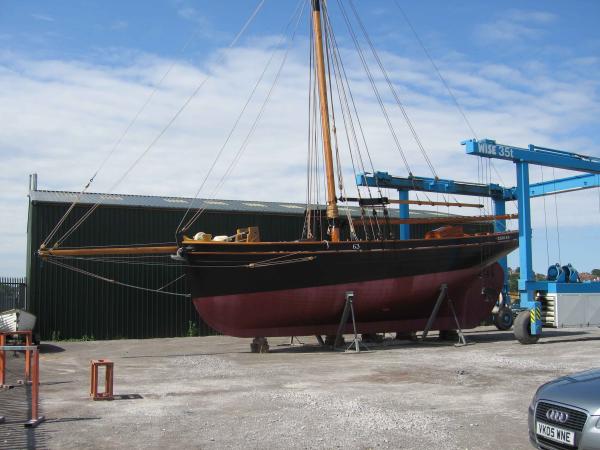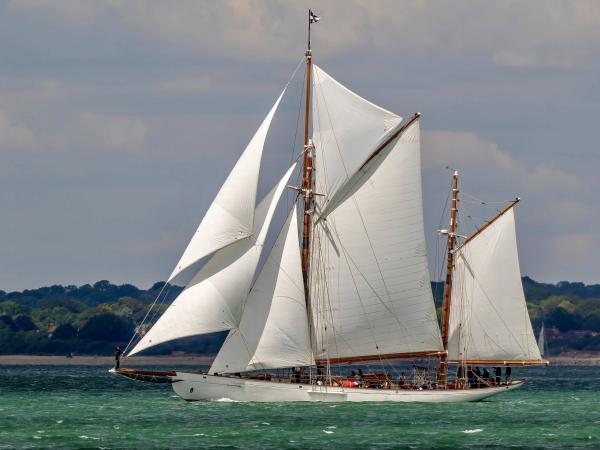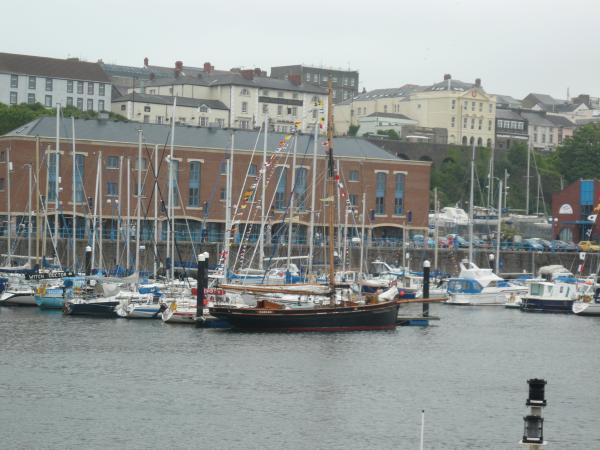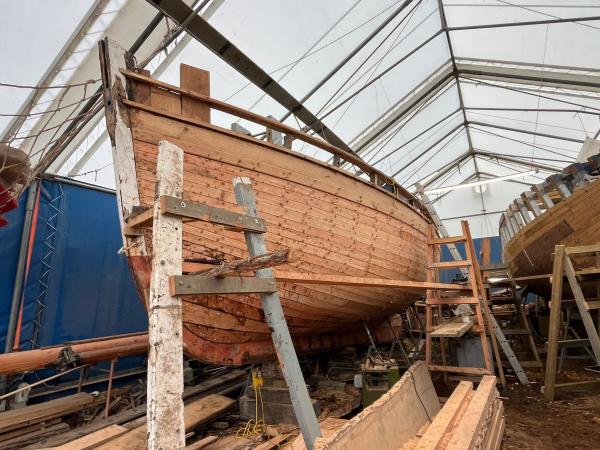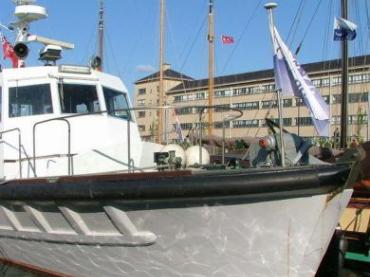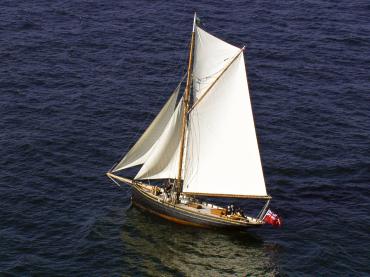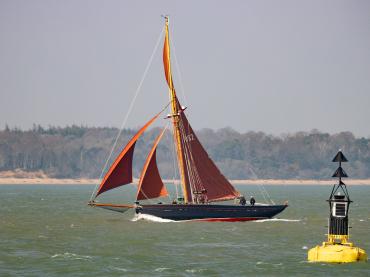

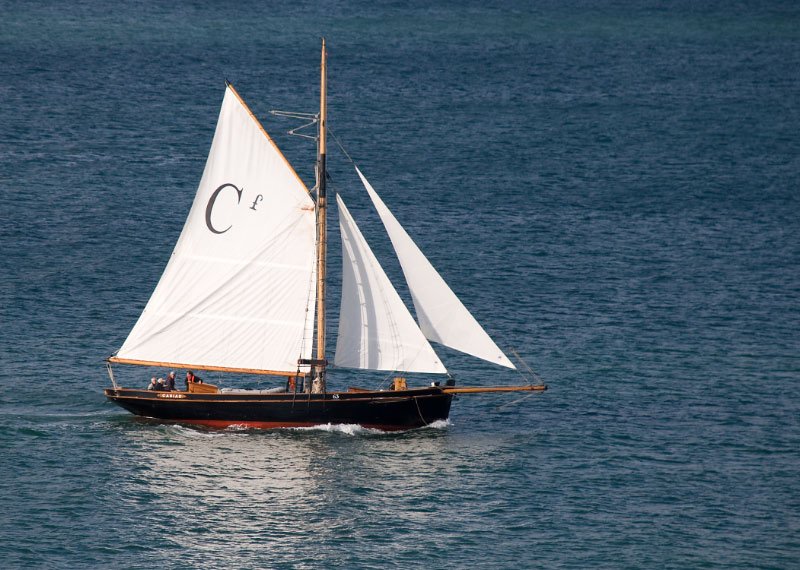
Details
Construction
Dimensions
History
The last sailing pilot cutter in service was CARIAD, which worked until 1922. She was built in 1904 by Edwin ‘Cracker’ Rowles at Pill, near Bristol, for the Cardiff pilot Thomas Richards and registered at Cardiff on 9 February 1905. Her name is Welsh for 'loved one'. Her frames and beams were of oak, and the planking of her garboards and bottom to the turn of the bilge was elm; above that it was pitch pine. The keel was of elm and she was fastened with galvanised iron. The mast, boom and bowsprit were of pitch pine, with gaff and squaresail yard of fir. Rowles started building cutters at Pill in 1887 and continued until 1910. He had the reputation for building fast and elegant looking boats, and CARIAD,no exception, had his cutters’ characteristic elliptical counter.
In 1913 the Cardiff pilots were amalgamated and CARIAD was sold to the Steam Pilot Boat Company (Cardiff and Bristol) Ltd, as were all the other Cardiff pilot cutters. She was kept in service with three other cutters until steam cutters were available to replace them. In February 1914 CARIAD was sold to the Bristol pilot Enoch Watkins, of Pill, serving as Bristol No. 2. Watkins died in 1916 but the cutter remained in his wife’s ownership and was used by other Bristol pilots including George Thomas, Christopher Case and Leonard Vowles. CARIAD's station was near the Breaksea lightship, and it was there on 12 December 1922 that the steam cutter Queen Mother came to relieve her.
CARIAD was sold for use as a yacht to Lt E N Waugh, RNR, who installed a 14 hp Kelvin petrol-paraffin engine in her. After being laid up for 18 months CARIAD was sold in 1923 to Frank Carr (who later became the second director of the National Maritime Museum, Greenwich) and featured in his book ‘ A Yachtsman’s Log’ (1936) . Carr owned CARIAD until 1958, sailing some 30,000 miles in her. He described her ‘fine powerful bows, sweet sheer, and short tucked-up semi-elliptical stern which helped make these craft the splendid sea-kindly vessels they are.’
In the 1970s CARIAD was preserved afloat at the Exeter Maritime Museum, but fell into disrepair. In 1997 she was rescued by Ken Briggs for restoration. In August 1999 the boat was taken into a shed on the quay at Portishead and work started in earnest three years later. By June 2004 the hull and deck had been largely replaced and restored as closely as possible to her original appearance. She was relaunched in June 2006. Cariad is based at Swansea and sails in the west country, Bristol Channel, and across to France, throughout the summer season. In 2011 she was re-planked by T Nielsen & Co at Plymouth and Gloucester.
2024-2026 Cariad is undergoing restoration by Jon Bray of Westcountry Cutters in Gweek.
Source: Historic Sail, Britain's surviving working craft, Paul Brown, the History Press.
Sources
Norman J Brouwer, International Register of Historic Ships (Edition 2, 1993, pp140) pub: Anthony Nelson
Peter Stuckey, The Sailing Pilots of the Bristol Channel (1977) pub: David and Charles
Classic Boat (December, 2010) Season round-up
Malcolm McKeand, Classic Boat (June, 1999, pp54-5) The final few
Own this vessel?
If you are the owner of this vessel and would like to provide more details or updated information, please contact info@nationalhistoricships.org.uk

